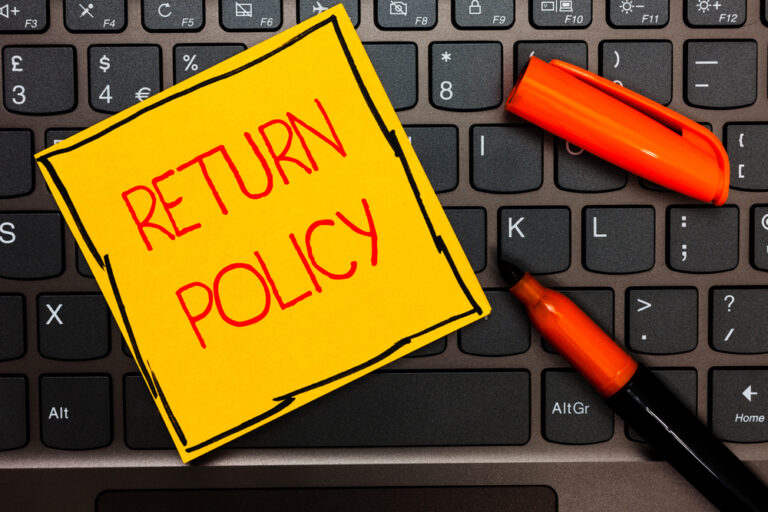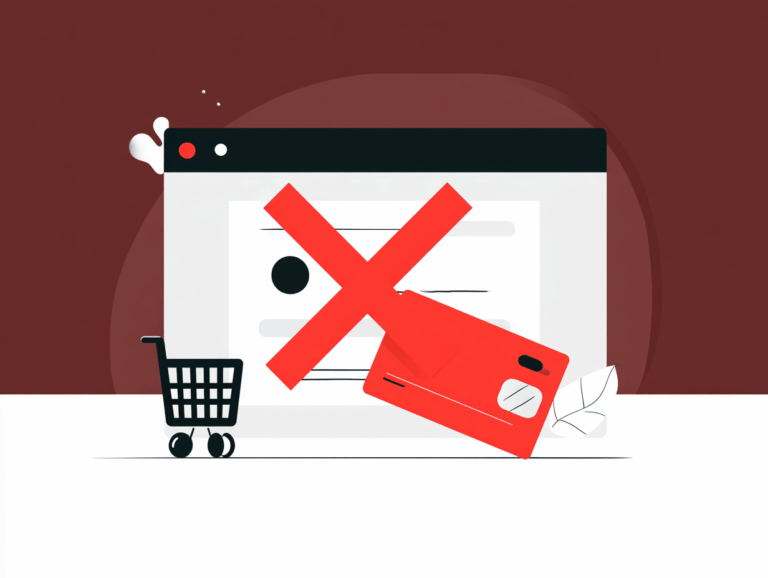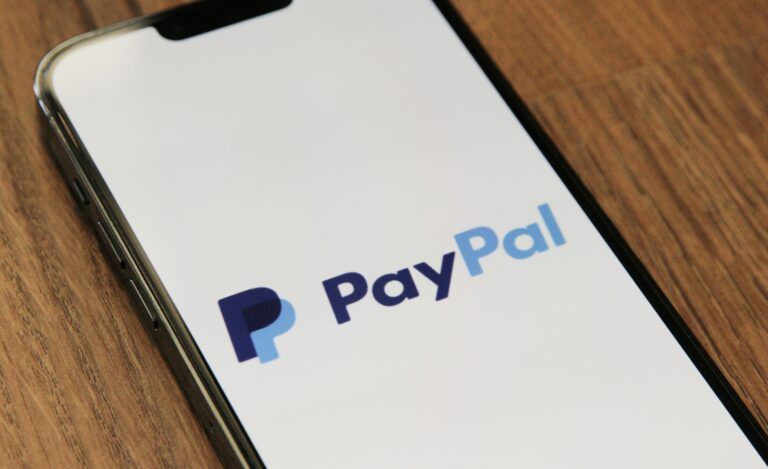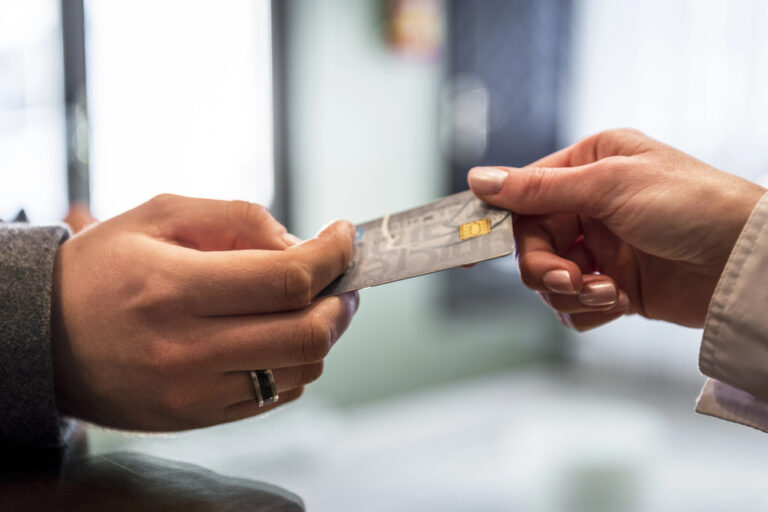Chargebacks have become an essential part of the payment ecosystem. They’re a powerful tool for consumer protection, but they can also be a major headache for merchants.
Whether you’re a business owner looking to protect your bottom line or a consumer wanting to understand your rights, this guide will walk you through everything you need to know about chargebacks.
From the moment a dispute is initiated to the final resolution, we’ll cover the timeline, the players involved, and the crucial steps along the way. We’ll also dive into some expert tips on how to prevent chargebacks and handle them effectively when they do occur.
DON’T LET CHARGEBACKS DESTROY YOUR BUSINESS
What is a Chargeback?
A chargeback is essentially a forced refund initiated by a cardholder through their issuing bank. It’s a consumer protection mechanism designed to safeguard cardholders from unauthorized transactions, fraud, or merchant errors.
Some payment processors like Stripe prefer to call chargebacks “disputes.” Don’t let this throw you off – they’re talking about the same thing.
So, how does this process work? Let me break it down for you:
- The cardholder spots a transaction and contacts their bank.
- The bank initiates the chargeback process with the merchant’s bank.
- The merchant gets notified and can either accept the chargeback or challenge it.
- If challenged, both sides present evidence, and the banks make a decision.
- The winner keeps (or gets back) the funds, while the loser faces potential fees.
It’s like a financial tug-of-war, with banks playing the ref.
Understanding credit card chargebacks is important for both consumers and merchants. For consumers, it’s a powerful tool to protect against fraud. For merchants, it’s a wake-up call to improve business practices and customer service.
CONNECT WITH A PAYMENT PROCESSOR THAT PROTECTS YOU AGAINST CHARGEBACKS
Cardholder Rights
First things first: the zero-liability clause found in most credit card terms means customers off the hook for unauthorized charges. While it’s yet to be seen whether those charges are fraudulent or not, card issuers are willing to take that kind of risk for their customers.
Why is that? Because those issuers get paid one way or another. Either the customer pays the bill or you do through a chargeback.
But wait, there’s more! Customers have the right to initiate a chargeback. In fact, the chargeback timeline is quick extensive.
The Standard 120-Day Window
Most of the time, customers have a solid four months to spot and dispute any fishy charges. That’s 120 days from the transaction date to say, “Hey, wait a minute!” and initiate a chargeback. This gives them plenty of time to review their statements and flag any purchases.
The Extended 540-Day Option
Now, here’s where it gets really interesting. In some cases, they can reach back even further – up to 540 days. That’s a whopping year and a half! This extended option is typically reserved for more complex situations or when the customer couldn’t reasonably have known about the issue earlier.
Remember, though, just because a customer can dispute a charge doesn’t always mean they should. It’s important that they use this right responsibly. Chargebacks should be the last resort, not a go-to solution (though these credit card chargeback time limit windows do seem to invite friendly fraud).
LOWER CHARGEBACKS AND INCREASE CONVERSIONS
Common Decline Reason Codes
Let’s dive into the four most common decline reason codes that might be costing you money. By recognizing these triggers, you can take proactive steps to reduce disputes and keep your hard-earned revenue.
1. Fraud
Fraud tops the chargeback charts, and it’s not just a headache for customers – it’s a major pain for you too. When a customer claims they didn’t authorize a purchase, you’re often left holding the bag.
To combat this, implement strong fraud prevention measures like Address Verification Service (AVS) and CVV checks. Also, keep detailed transaction records – they’ll be your best friend if you need to dispute a fraud claim.
2. Duplicate Processing
We’ve all fat-fingered a button at some point, but in payment processing, a double-click can mean double trouble. Duplicate charges are easy for customers to spot and dispute.
To prevent this, ensure your point-of-sale system has safeguards against multiple identical transactions. Also, train your staff to be vigilant about confirming transactions before processing.
3. Canceled Recurring Transactions
Subscription-based businesses, listen up! If a customer cancels their recurring payment but still gets charged, you’re likely to face a chargeback. Also, if the customer decides to cancel via their bank without attempting to cancel through you, it’s a chargeback.
Make your cancellation process crystal clear and foolproof. Implement systems that immediately halt charges upon cancellation, and consider sending confirmation emails to customers. Remember, it’s easier to stop a charge than to fight a chargeback.
4. Incorrect Amount Charged
Charging the wrong amount is like inviting a chargeback to dinner. Whether it’s a misplaced decimal or a pricing error, customers won’t hesitate to dispute if the charge doesn’t match their expectations.
Double-check your pricing inputs, especially if you’re manually entering amounts. For e-commerce, ensure your website displays prices accurately and that they match what’s processed at checkout.
GET CHARGEBACK ALERTS TO PREVENT CHARGEBACKS AND AVOID FEES
Business Owner Rights: Your Defense Against Chargebacks
As a business owner, you’re not defenseless when it comes to chargebacks. Let’s dive into your rights and how to effectively use them.
Your Right to Dispute
When hit with a chargeback, remember this: you have the right to fight back! Don’t let the fear of confrontation or the hassle of paperwork deter you. Every chargeback you receive is an opportunity to defend your business and potentially recover lost revenue.
Best Practices for Disputing Chargebacks
To maximize your chances of winning a dispute, follow these key strategies:
1. Keep Your Communication Concise
Cut through the noise and get straight to the point. Banks and card issuers deal with countless disputes daily. Make their job easier (and your case stronger) by presenting your evidence clearly and concisely. Avoid rambling explanations or irrelevant details that might muddy your argument.
2. Provide Only Relevant Details
Quality trumps quantity when it comes to evidence. Focus on presenting information that directly addresses the reason for the chargeback. This might include transaction receipts, delivery confirmations, or customer communications. Each piece of evidence should serve a clear purpose in supporting your case.
3. Stay in Constant Communication with the Bank
Don’t file your dispute and disappear. Maintain an open line of communication with the bank throughout the process. Respond promptly to any requests for additional information. This proactive approach demonstrates your commitment to resolving the issue and can work in your favor.
Remember, disputing chargebacks isn’t just about recovering individual transactions. It’s about protecting your business’s reputation and financial health. By exercising your rights and following these best practices, you’re not just fighting chargebacks – you’re safeguarding your business’s future.
SAFEGUARD YOUR BUSINESS AGAINST CHARGEBACKS WITH A BETTER MERCHANT ACCOUNT
Winning vs. Losing a Chargeback Dispute
In the world of chargebacks, every dispute is a high-stakes game. Let’s break down what you stand to gain or lose when you’re in the chargeback arena.
When You Lose
Losing a chargeback dispute hits your wallet twice:
- Kiss That Transaction Goodbye: First, you’ll have to refund the full transaction amount to the customer. That sale you thought you made? It’s gone, along with the product or service you provided.
- Chargeback Fees Sting: Here’s the kicker – you’ll also get slapped with a chargeback fee. We’re talking $20 or more per dispute. And here’s the real pain point: these fees are non-refundable. Even if you later resolve the issue with the customer, that fee isn’t coming back.
When You Win
Winning feels good, but it’s not all sunshine and rainbows:
- Keep the Transaction Amount: The big win here is that you get to keep the money from the original sale. Your revenue stays intact.
- But the Fee Remains: Remember that chargeback fee? It’s still there, win or lose. Consider it the price of doing battle in the chargeback arena.
Second Disputes
Sometimes, you might consider disputing a chargeback decision. But tread carefully:
- High-Stakes Only: We generally recommend going for a second dispute only for transactions of $5000 or more. Why? Because…
- More Fees Ahead: A second dispute process incurs even more fees. You’re essentially doubling down on your investment in fighting this chargeback.
- Risk vs. Reward: Weigh the potential recovery amount against the additional fees and effort. Sometimes, it’s better to cut your losses.
Remember, the best chargeback strategy is prevention. While it’s crucial to fight illegitimate chargebacks, your primary focus should be on reducing their occurrence in the first place.
PREVENT CHARGEBACKS AND AVOID FEES
Chargeback Prevention Tips
Let’s face it: in the stage of e-commerce, chargebacks are uninvited guests. But don’t worry! We’ve got some killer tips to help you show those chargebacks the door.
Remember, the customer is always right… until you prove them wrong. Treat every customer interaction as an opportunity to prevent a chargeback. Happy customers rarely file disputes!
And even if you think you’ll lose, always respond to chargebacks. This shows banks you’re a legitimate business that takes transactions seriously. It’s like building a track record of responsibility.
Okay, onto the real tips:
Tip #1: Display Crystal Clear Checkout Pages
Make your checkout page clearer than a cloudless sky. Clearly display product details, prices, and terms. The less confusion at checkout, the fewer “I didn’t order this” chargebacks you’ll face.
Tip #2: Collect Comprehensive Information
At checkout, gather as much info as you can without scaring customers away. Think shipping addresses, IP addresses, and CVV codes. This data becomes your armor in chargeback battles.
Tip #3: Set Clear Expectations
Tell customers exactly what to expect. Be upfront about delivery times, how the charge will appear on their statement, and any potential delays. When customers know what’s coming, they’re less likely to panic and file a dispute.
Tip #4: Resolve Issues Directly
If a customer has a problem, bend over backwards to fix it directly. A refund might sting, but it’s way better than a chargeback. Plus, you might just turn a potential dispute into a loyal customer.
Tip #5: Make Subscription Cancellations a Breeze
For subscription services, make canceling easier than signing up. Counter-intuitive? Maybe. But it’s better than facing “canceled recurring transaction” chargebacks.
Tip #6: Leverage Chargeback Alert Services
Consider using chargeback alert services. These can give you a 24hr heads-up about potential chargebacks, allowing you to issue refunds before the dispute becomes official. And as we said before, if it comes down to a chargeback vs refund, the refund should win every time.
Remember, preventing chargebacks isn’t just about avoiding losses—it’s about building a trustworthy business that customers love. Implement these tips, and watch your chargeback rates plummet while your customer satisfaction soars!
GET CHARGEBACK ALERTS AND MERCHANT SERVICES THAT BACK YOUR BUSINESS









